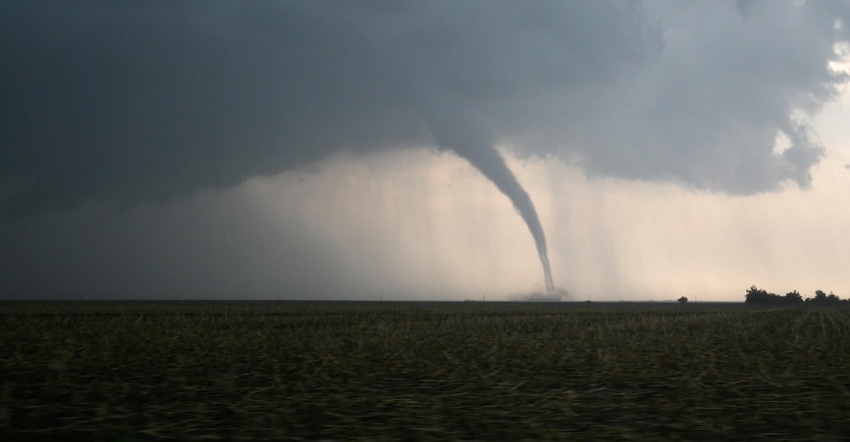April 16, 2018

You’ve probably heard that tornadoes always move to the north and east. Is that true or just an old wives’ tale? Can you count on it if you’re trying to stay away from a tornado?
While it’s true that most tornadoes move from southwest to northeast, not all do. In the U.S., a vast majority of weather systems move from west to east. Tornadoes follow that pattern as a result. Tornadoes are almost always formed as part of a supercell system or a squall line, and the atmospheric conditions that produce these systems — especially the 500-millibar atmospheric flow, which amounts to winds about 3.5 miles above the ground — generally push them along a southwest to northeast line.
A 2006 study found that tornado paths also differ by location and time of year. The study found that tornadoes generally come from the southwest, but paths from the west and northwest are not at all uncommon in some areas of the country, and later in tornado season, such as in July and August.
In the Ohio Valley, tornado season peaks in June. Those tornadoes generally originate in the west to southwest direction. During July and August, west is the prominent origin direction.
Don’t try to outguess a tornado
You can’t rely on a tornado to follow an expected path or direction. Tornadoes are chaotic and can turn or even reverse at a moment’s notice. One of the most damaging tornadoes of recent times, the Moore, Okla., tornado in 2013, followed a northwest to southeast path through the Oklahoma City region.
Tornadoes will almost always come from the western half of the compass, but the orientation is not guaranteed. Tornado paths are dependent on a wide variety of factors, including the motion of the storm, the outflow winds of the storm system and the type of storms that spawned the tornado.
For example, hurricanes frequently spawn tornadoes after landfall. The direction of these twisters is determined by where in the storm the tornado began. It will follow the rotation of the storm.
In short, most tornadoes come from the southwest quadrant, but this is not a steadfast rule and should not be used as a means of avoiding a tornado. Every storm is unique. If you find yourself in a tornadic situation, the movement of that particular storm should be the first thing that determines a route of escape.
Take precautions
Robin Tanamachi, an atmospheric science professor at Purdue University and a former researcher at the Center for Analysis and Prediction of Storms, told NPR in 2011 that if you find yourself outdoors or on the road during a tornado, get to a sturdy building if there is time. If not, the best option is to get out of your vehicle and find the lowest ground possible. It’s usually a ditch or culvert near the road. Do not go to an underpass! Bridges can act as wind tunnels and funnel debris and stronger winds through the gaps.
As tornado season approaches, it’s vital that people living in tornado-prone areas have a plan in case there is a tornado. That’s basically anywhere east of the Rocky Mountains. Know the safest places in your home and workplace if you need to seek shelter.
Eggert works in the Indiana State Climate Office. He writes from West Lafayette, Ind.
About the Author(s)
You May Also Like




